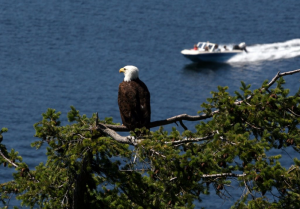 Along the shores, in the water and soaring overhead, observe routines of the Bay of Fundy’s resident wildlife. Spot sandpipers and plovers scurrying across the mudflats, white-tailed deer taking a drink from rivers and lakes or perhaps a moose rising from a marshland snooze. In the skies witness the magnificent movements of bald eagles, ospreys and peregrine falcons. To view marine mammals and seabirds playing in their chilly, water home, take an enjoyable nature cruise.
Along the shores, in the water and soaring overhead, observe routines of the Bay of Fundy’s resident wildlife. Spot sandpipers and plovers scurrying across the mudflats, white-tailed deer taking a drink from rivers and lakes or perhaps a moose rising from a marshland snooze. In the skies witness the magnificent movements of bald eagles, ospreys and peregrine falcons. To view marine mammals and seabirds playing in their chilly, water home, take an enjoyable nature cruise.
To experience the wilderness surrounding the Bay of Fundy, explore the expansive wilderness of Fundy National Park, travel the Fundy Trail Parkway to previously unreachable coastal areas, inspect the old-growth forests and steep ravines of Cape Chignecto Provincial Park or visit Brier Island to appreciate its wealth of wildflowers, orchids and the endangered Eastern Mountain Avens.
Fundy National Park
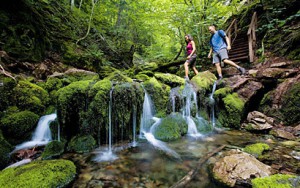
Fundy National Park is the place where the Caledonia Highlands meet the fog-generating Bay of Fundy. New Brunswick’s first national park, Fundy’s coastline is shaped daily by the bay’s giant tides. Fundy National Park is home to over 260 species of birds, various amphibians and reptiles nearly forty species of mammals. Go hiking (hiking trails range from easy, short loops to an intense 50km circuits), biking (on one of six mountain bike trails) or take a refreshing swim at Bennett or Wolfe Lake. Or perhaps consider taking part in a geocaching adventure. (http://www.pc.gc.ca/pn-np/nb/fundy/activ/ete-summer.aspx)
Fundy Trail Parkway
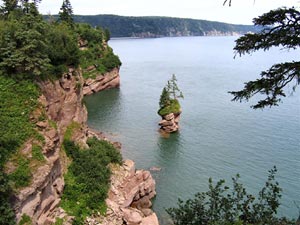
Situated just outside the fishing village of St. Martins, the Fundy Trail Parkway allows its visitors to explore previously unreachable coastal areas and some of the last remaining coastal wilderness between Florida and Newfoundland. Learn of the community’s rich past in logging, fishing and shipbuilding, spot plant, marine and wildlife in their natural habitats, witness the ebb and flow of world’s highest tides and enjoy absolutely striking scenery. The Fundy Trail offers paved auto parkways, hiking and biking trails and stairways to unspoiled beaches.
Cape Chignecto Provincial Park
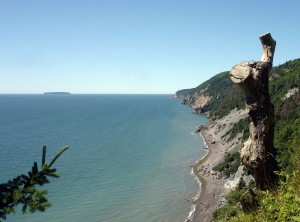
Comprised of 600-foot towering cliffs, 18 kilometres of pristine coastline, steep ravines and old-growth forests, Cape Chignecto Provincial Park is found on the Western tip of the Avalon Eco-Zone along the Bay of Fundy. Not only is the park a great place to observe the tides, as they continuously lap at the base of the cliffs, Cape Chignecto is home to some of the province’s most significant geological deep valleys, eight fantastic hiking trails of varying difficulty, rare plantlife, scenic views and rich cultural heritage.
Brier Island
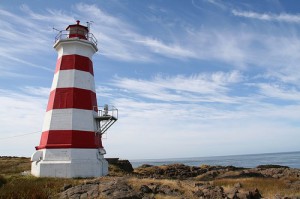
Two short ferry rides from Digby Neck will bring you to one of Nova Scotia’s best eco-destinations, Brier Island. Brier Island is home to a wide variety of flora and fauna, twisting coastal hiking trails, two interesting lighthouses and is great place to embark on various sea adventures. Brier Island, situated on the Atlantic Flyway, is also an excellent place for bird watching, especially during fall migration.
This was the 31st article in our “52 Reasons to visit the Bay of Fundy” series. Deep Sea Fishing was last week’s reason to visit the Bay of Fundy. Don’t forget to mark your calendar or use theRSS feed so you won’t miss the 32nd reason next week!
A Name
I agree with all three of you, it would be nice and helpful to have a list of species since most people would need it for a report of some sort.
Nina
I agree with both of you it would really be helpful. I need it for geography
Carlos
Can’t there just be a list of all the species in and around the bay of Fundy? I need this for social studies.
Ginger Louise
i agree with Carlos, but i need it for science.